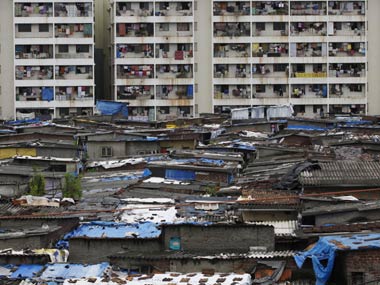Slumbai. The epithet rests uneasy on a city associated so deeply with dreams, aspirations, abilities and luxe lifestyle. It takes Mumbai’s glamour quotient several notches down but nothing describes it better. It is difficult to tell the city from the slums. Slums are as much part of the Mumbai narrative as its fabled high rises and gated communities. An ugly presence in what could be a beautiful city, the sprawling shanty towns in the heart of the city and elsewhere are a legitimate presence. The dirt and squalor here define the city as much as its ritzy residential premises do. Call it one of those big contradictions in the city. But there’s no escaping the reality in the Alpha World City nursing Shanghai dreams. More than half of its space is occupied by slums, the make-shift abode for the population that keeps the gigantic economic machine that the city is, running. The filth and the ugliness are a logical extension of a state of existence typified by slums. [caption id=“attachment_97847” align=“alignleft” width=“380” caption=“Slums are as much part of the Mumbai narrative as its fabled high rises and gated communities. Reuters”]  [/caption] Dharavi, that 500-acre spread of disorganised tenements, inspires awe, not revulsion. Home to over a million people, it also houses more than 5,000 businesses and 15,000 single-room factories. It is one of the biggest slum settlements in the world. But according to latest estimates there are at least three slums bigger than Dharavi in and around the city. What does one make of it? You have no options there. The slums are the city, not an avoidable addition to it. In the apparent orderliness around the slums represent the anarchic. For long they have been nightmares for urban planners and civic policy-makers. Efforts to bring in a sense of sanity to them – through well-constructed houses and improved civic amenities – have fallen flat several times. For the slum-dwellers such changes make little sense. There is an order within the visible disorderliness which they identify with and relate to. It is as much social as economic. Any change signals a break from the rhythm of normal slum life. Outsiders won’t catch the nuances here despite their best intentions. The development of the slum culture goes back a long way in time – right from the days of the Portugese through the era of cotton mills to the present. Mumbai has always been the magnet for migrants. Slums in a way recreated their community-lives back home in the far off city besides lending a sense of togetherness to a collection of disparate people. It provided the sense of security and the social support system too. With the intangibles in place, other things such as physical comforts did not matter much. It still does not. Should we be worried? Yes. Too many people are crammed into small spaces. There are too many people making do with the minimum. There are health and hygiene issues too. Life for many is dehumanising. The existential realities are too harsh to be romanticised and swept under the carpet. It should change, and fast. But are they a slur on Brand Mumbai? Are they a dirty advertisement for a metropolis vying to be among the best in the globe? Not quite. They reflect the city’s ability to harmonise extremes, bring about agreeable co-existence among the unequal.
There’s no escaping the slums in the city of high rises and gated communities. Love then or hate them, they are as much the city as the latter are.
Advertisement
End of Article


)
)
)
)
)
)
)
)
)



